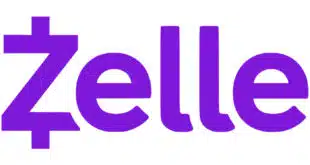It seems there’s nothing hazy about the future of cloud-based POS. What’s driving the trend?
Cloud computing is a part of daily life. Whether it’s banking online, making a P2P payment, streaming movies on a smart television, or sending an email (think Gmail), most software applications, data storage, and networking capabilities are delivered through remote servers via the Internet.
Driving the popularity of cloud computing is the cost efficiency of its infrastructure, which eliminates the capital expense of on-premise servers and enables remote maintenance capabilities and on-demand scalability to meet changing user needs.
Thanks to mobile devices, which allow access to apps anywhere, any time, cloud computing has become so ubiquitous consumers rarely give it a second thought.
Merchants, on the other hand, are a different story. With the exception of a handful of merchant categories, such as restaurants, merchants remain tethered to the traditional notion of point-of-sale system infrastructure, running applications off, and storing data on, a local server. This despite their comfort using cloud-based services in their personal life.
Merchants’ dated perception of POS systems has not only slowed their adoption of cloud-based technology, but made the technology a harder sell, because the less merchants understand about a new technology, the more inclined they are stick with what they know.
“Even though cloud-based technology has been around for years, cloud-based POS systems are still a bit too complicated for many merchants to understand,” says Ken Schember, vice president of mid-market, ISO and VAR Solutions for payment solutions provider PAX Technology Inc.
As a result, cloud-based POS systems are just beginning to percolate to the surface as independent sales organizations and value-added resellers alter their sales strategies to better educate merchants about the benefits of cloud-based POS systems, Schember adds.
A big selling point is affordability. The total cost of ownership for a cloud-based POS system can range up to 20 times less than a traditional POS system, payments experts say. On average, a single, traditional POS system can run between $3,000 and $7,000 to install, plus hundreds of dollars in monthly service fees. Merchants installing multiple POS terminals can expect to spend tens of thousands of dollars, if not more.
Those costs do not include the price of on-premise servers, which are essentially a rack of computer hardware for capturing data, processing transactions, and generating analytical reports on sales performance.
“An on-premise POS system can be five to 20 times more expensive than a cloud-based POS system if you factor in hardware, maintenance, software, and licensing fees,” says Anthony Zhang, vice president of sales for payment technology provider Fattmerchant, Inc.
Tight Budgets
The emphasis on price as a key selling point for cloud-based systems is not surprising, as cost has always been a big consideration for merchants when it comes to upgrading their POS systems. That’s especially true for small and medium-size merchants on tight IT budgets.
Factors contributing to the affordability of cloud-based POS systems include ease of set-up, the option for merchants to purchase generic hardware that can interface with legacy back-office systems (such as tablet computers rather than a proprietary terminal), and automatic, remote software installation and updates.
“There is really no need for onsite installation or laying cable with cloud-based systems,” says Pat Ward, vice president, Integrated and Enterprise sales for North American Bancard. “That reduces a lot of upfront costs.”
Plus, cloud-based systems typically charge low monthly subscription fees that include maintenance, making it easier for merchants to budget for the technology.
Toast Inc., a provider of POS systems for restaurants, charges between $79 and $150 per month for its software, for example. In addition, Toast charges $100 per hour for onsite support and $400 to build a full menu in the merchant’s POS system.
A lower cost of ownership and ease of installation make it easier for merchants in need of replacing aged, legacy POS systems to embrace cloud technology.
Changing Demands
So far, restaurants have been on the leading edge of adoption because of myriad changes in how their industry services customers.
Third-parties such as Uber Eats make it possible for restaurants to offer online food ordering and delivery. In addition, sit-down restaurants have begun equipping wait staff with tablet computers that can accept orders and payment at the table. The latter helps increase table turnover by speeding payment, which can increase a restaurant’s revenues, not to mention customer satisfaction, payments experts say.
Such advances have led restaurants to conclude their existing POS systems need to be upgraded to handle these new functions, which has made them more open to new POS technology.
“As a restaurant operator, if you’re going spend the money to upgrade your existing POS system, you might as well spend it on new technology that can keep up with the changing demands restaurants are placing on their POS systems,” says Chris Lybeer, chief strategy officer for Revel Systems, provider of a cloud-based POS system. “Traditional POS systems can’t support processing orders at the table or accepting orders online.”
Accepting payment at the table through a tablet computer is also easier for wait staff and customers than through a hand-held POS terminal, Lybeer adds.
As part of its POS system, Revel, which focuses on servicing restaurants and specialty merchants, offers restaurants a white-label application to accept online orders. “This eliminates the service charges levied by third-party providers,” Lybeer says.
Other POS systems providers vying for a slice of the restaurant industry include Toronto-based TouchBistro Inc., New York-based ShopKeep Inc., Montreal-based Lightspeed, San Francisco-based Square Inc., Providence, R.I.-based Upserve Inc., and Sunnyvale, Calif.-based Clover Network Inc., a division of Fiserv Inc.
Beyond Lower Fees
While cost can be a big selling point for cloud-based systems, ISOs are discovering merchants often need to be educated about how the technology can benefit their businesses before they will move away from traditional credit card readers and electronic cash registers. In other words, sales reps can’t sell a merchant on cloud technology simply by offering to cut transaction fees.
Instead, ISOs should emphasize that cloud-based systems can also run business applications, such as inventory management and time and attendance, that can make the POS system a center for managing their business.
“The remote log-in capabilities of cloud-based systems means that merchants can update inventory or change pricing remotely, which is a big benefit, because the merchant is no longer tied to their system onsite,” says Clover co-founder and Fiserv vice president Mark Schulze.
Other education tools being used by ISOs include webinars, testimonials, and old-fashioned sales presentations that walk merchants through the benefits of the technology.
“To market cloud-based POS systems, you still need to speak in a language that the merchant understands,” says Fattmerchant’s Zhang.
The goal, Zhang adds, is to take a consultative selling approach by demonstrating system parity with on-premise POS solutions, then highlighting the added functionality cloud-based systems can provide beyond what traditional POS systems offer. For example, the open application programming interfaces common to cloud-based systems can provide better connectivity with back-office solutions than a traditional POS system.
Remote access also allows POS-system providers to log onto a merchant’s device, with the merchant’s permission, and walk him through how to troubleshoot problems and reboot the device. Hence, most issues can be addressed by a dedicated customer-support manager, or fixed by the development team that runs the cloud-based POS solution, on a remote basis. Software companies, such as Microsoft Corp., already offer this service for consumers.
Another check in the plus column for cloud-based POS is that updates can be received automatically across all devices.
What sales representatives want to avoid when marketing cloud-based POS is trying to create a new category or niche for their solution, Zhang says.
Data security is another sticking point when it comes to selling cloud-based systems. Many merchants fear that because data is transmitted via the Internet to a remote server, it is more vulnerable to hackers than data stored in an onsite server.
Debunking those fears starts with pointing out that card data moving through cloud-based POS systems is encrypted and that merchants don’t hold the keys to encrypt and decrypt the data, payments experts say.
MagTek Inc., for example, offers a gateway compatible with cloud-based POS systems that encrypts and decrypts transaction data on the front end and back end, respectively. The encrypted data is replaced with a token, which turns meaningful data into a string of random characters that have no value to criminals should the server or network be breached.
“There are scare tactics out there when it comes selling cloud-based POS systems, but with so much of what we do technologically today taking place in the cloud, it should not be hard to educate merchants about data security in the cloud,” says Lybeer. “Merchants should not be running client-server solutions in today’s technology environment.”
‘The Next Wave’
With the buzz around cloud-based POS systems growing, payments experts predict merchants across more categories will begin adopting the technology for its low cost, user friendliness, and ease of maintenance. “Merchant demand for the technology is growing, and there are more developers pushing into this space,” says John Arato, vice president and general manager, retail solutions, at MagTek.
One merchant segment likely to be slower to adopt the technology, however, is large chains. The reason, payments experts say, is large merchants tend to be the most heavily invested in their legacy systems, which can create more hurdles in developing the business case for a full-scale replacement.
“The big chains will likely be the last to get on board, because the investment in their enterprise systems is so great, it makes rip and replace a heavier lift,” Lybeer says. “We see specialty merchants and service-based merchants as the next wave.”
In the meantime, expect the noise about cloud-based POS to continue to rise as more merchants with firsthand experience become evangelists for installing it. “Merchants I talk to rave about the technology’s cost effectiveness, ease of use, and flexibility,” says Arato. “We see a lot of growth ahead for cloud-based systems.”





